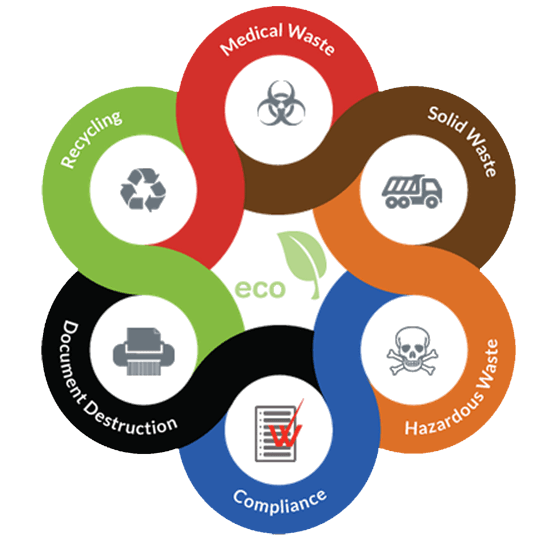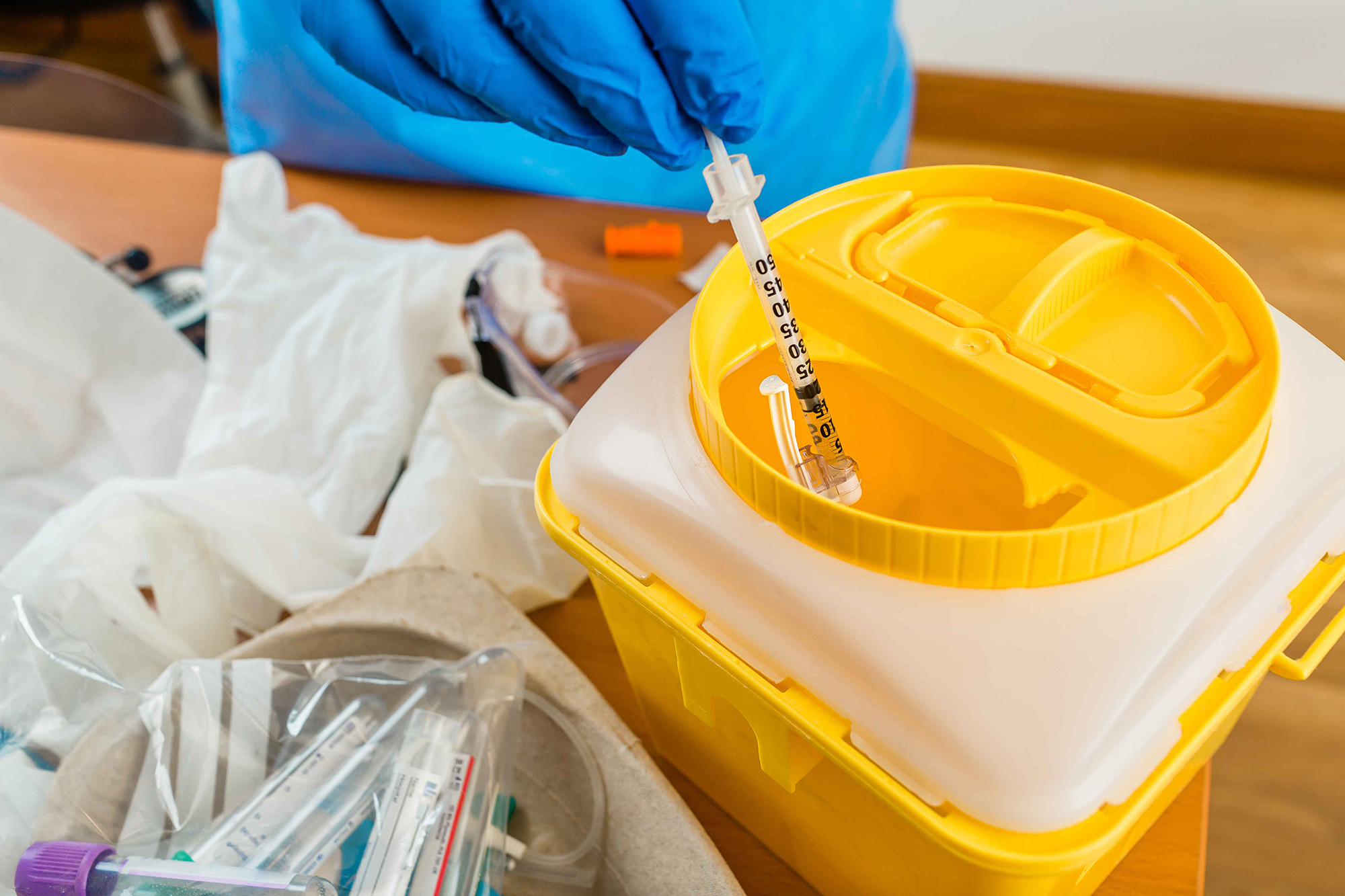Best Practices for Medical Waste Management
Clinical waste management is an important facet of health care centers' procedures to guarantee the safety and security of individuals, staff, and the environment. Executing best techniques in medical waste monitoring is necessary to minimize the threats connected with unsafe waste.
Segregation and Classification
In the area of medical waste monitoring, appropriate segregation and classification are necessary practices for ensuring the effective and secure disposal of healthcare-related materials. Clinical waste is created from different resources, including hospitals, centers, laboratories, and other medical care facilities. It includes a vast array of products, such as needles, syringes, bandages, handwear covers, and pharmaceutical waste.
Partition involves the organized splitting up of different kinds of medical waste based on their features and possible threats. Sharps waste, such as blades and needles, should be placed in puncture-resistant containers to prevent injuries and the spread of infectious conditions.
Classification is the procedure of categorizing medical waste into various groups based on its possible hazards. WasteX Medical Waste Disposal. These classifications may include transmittable waste, contaminated materials, pharmaceutical waste, and general waste. By classifying waste, health care centers can establish the proper disposal techniques and ensure conformity with local laws and guidelines
Proper partition and categorization of clinical waste not only protect the health and wellness and safety of medical care workers and the general public however also add to the overall performance and efficiency of waste management. It minimizes the risk of mishaps, minimizes ecological impacts, and promotes liable waste disposal techniques.
Appropriate Storage Space and Identifying
To make certain the risk-free and reliable disposal of clinical waste, medical care facilities have to adhere to appropriate storage space and labeling practices. Appropriate storage space and labeling play a critical role in preserving the integrity of medical waste monitoring systems and safeguarding the wellness and safety of health care employees, people, and the general public.
When it pertains to storage, it is necessary to have actually designated areas particularly created for various types of medical waste. These areas need to be secure, well-ventilated, and furnished with proper containers that satisfy governing standards. Segregation and categorization of waste ought to likewise be taken right into factor to consider to stay clear of cross-contamination and potential hazards.
Moreover, correct labeling is vital for effective waste management. Each container should be clearly labeled with the appropriate symbols, color-coding, and information about the waste it includes. Labels ought to include information such as the sort of waste, day of collection, and the name of the generator. This makes certain that all people managing the waste can quickly recognize and manage it appropriately.
Routine tracking and evaluation of storage locations and containers are important to recognize any type of problems or infractions. Staff needs to be educated on proper storage space and labeling practices, emphasizing the importance of conformity with guidelines and protocols.
Safe Transportation and Handling
Ensuring the proper and safe transportation and handling of clinical waste is vital for maintaining the honesty of waste administration systems and safeguarding the wellness and security of all entailed. Medical waste, which consists of products contaminated with contagious materials, pharmaceuticals, and various other dangerous materials, need to be transported in a way that prevents leaks, spills, and possible contamination.
It is necessary to make use of puncture-resistant and leak-proof containers that are particularly made for clinical waste. In addition, waste should be segregated based on its nature and kind to protect against cross-contamination.
Throughout transport, it is very important to make certain that waste containers are securely fastened and kept in a stable fashion. Autos used for delivering clinical waste must be furnished with ideal safety and security attributes, such as spill control systems, to decrease the threat of any kind of spills or leakages (medical waste disposal service). Motorists must get training on appropriate handling and emergency reaction procedures to efficiently deal with any unforeseen events
Additionally, the transportation and handling of clinical waste must follow all appropriate regulations and standards set forth by local, state, and federal authorities. Normal assessments and audits ought to be conducted to analyze conformity and identify any kind of locations for renovation.

Conformity With Regulatory Standards
Maintaining conformity with governing standards is crucial for reliable medical waste administration. These guidelines are implemented to safeguard public health and the atmosphere by ensuring that clinical waste is appropriately managed, treated, and disposed of. medical waste removal service. Compliance with regulatory guidelines aids to stop the spread of transmittable illness, decrease prospective hazards, and minimize the overall effect of clinical waste on the atmosphere
To attain compliance, health care facilities need to remain notified concerning the specific guidelines controling medical waste administration in their jurisdiction. These policies might vary from country to nation, and also within different states or areas. It is essential for health care centers to have a comprehensive understanding of these standards and to apply suitable approaches and methods to guarantee conformity.
One key aspect of conformity is the correct segregation and labeling of different sorts of clinical waste. This consists of dividing sharps from various other waste, as well as classifying waste based upon its possible risks. Healthcare facilities need to likewise make certain that clinical waste is saved in suitable containers and that these containers are appropriately classified and secured.
Furthermore, compliance with regulatory guidelines requires healthcare facilities to establish appropriate training and education and learning programs for team participants entailed in clinical waste monitoring - WasteX Medical Waste Disposal. This includes offering training on waste segregation, dealing with, and disposal procedures, in addition to the appropriate use personal safety tools
Routine monitoring and audits are also vital to ensure recurring conformity with regulatory standards. This includes conducting normal assessments of waste storage areas, recording waste administration procedures, and keeping records of garbage disposal.
Reliable Disposal Techniques
Healthcare centers have to utilize effective disposal techniques for proper monitoring of medical waste - WasteX Medical Waste Disposal. Improper disposal of clinical waste can position significant health and wellness and ecological risks. There are a number of methods that can be utilized to effectively take care of medical waste, making certain the safety of medical care workers, clients, and the basic public
One commonly made use of technique is incineration. Burners can securely burn clinical waste at site link high temperature levels, decreasing the quantity and damaging any potentially unsafe pathogens. Nevertheless, incineration can be pricey and may release dangerous pollutants right into the air otherwise correctly controlled.
An additional method is autoclaving, which includes subjecting the waste to high-pressure vapor. This process eliminates microorganisms, infections, and other bacteria, providing the waste safe for disposal in routine waste streams. Autoclaving is a reliable and eco-friendly method, yet it calls for specialized devices and skilled employees.
Chemical sanitation is also utilized sometimes, where liquid chemicals are put on the waste to sanitize it. This method is much less frequently used because of problems concerning the effectiveness of chemical sanitation and the potential for chemical residues to contaminate the environment.
Along with these techniques, health care centers need to additionally apply correct partition, packaging, and labeling of clinical waste to ensure its secure handling and disposal. Regular training and education of staff on proper waste management practices are essential to maintaining effective disposal methods.
Conclusion

Medical waste management is a critical facet of health care centers' operations to make certain the security of patients, team, and the environment. Applying finest techniques in medical waste monitoring is vital to minimize the dangers connected with harmful waste. These categories might include contagious waste, unsafe waste, pharmaceutical waste, and general waste.In verdict, implementing finest techniques for medical waste monitoring is necessary for guaranteeing the safety and security of healthcare workers, patients, and the atmosphere. By properly setting apart and classifying waste, keeping and classifying it correctly, making sure secure transportation and handling, conforming with governing standards, and employing efficient disposal approaches, healthcare facilities can efficiently handle and decrease the threats associated with medical waste.